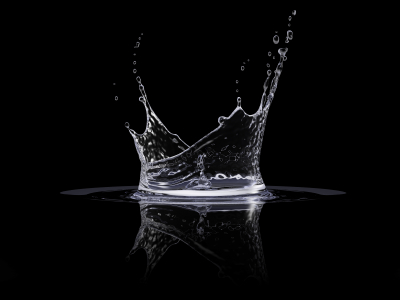|
|
| Turning to New and Old Technology to Address Water Efficiency |
| By Robert Kravitz, President AlturaSolutions |
| Published: 09/22/2014 |
 Correctional facilities have a number of unique challenges when it comes to reducing water consumption. Unfortunately, in far too many situations, restroom fixtures are subject to all types of abuse by inmates. And with this abuse typically comes water waste.
Correctional facilities have a number of unique challenges when it comes to reducing water consumption. Unfortunately, in far too many situations, restroom fixtures are subject to all types of abuse by inmates. And with this abuse typically comes water waste.
This is of particular concern in California, where most state agencies are being directed to reduce water consumption by 20 percent or more. And California may be just the first of many states over the next few years that must grapple with significant water shortages. While consumers and businesses typically can be encouraged to get on the “water-reducing bandwagon” just by making them more aware of how serious conditions are, this is not always the case in correctional locations. Typically, correctional facilities have manually operated flush valves in each cell, and often these are subject to abuse by inmates who have been known to flush bedsheets, clothing, and contraband down toilets, often flushing the toilet several times over a short period of time. Sometimes the goal is to flood the cell by flushing toilets continually or allowing sinks to overflow. To address these issues, new technologies have been developed to take over when an inmate does not seem to be using water responsibly or is not adjusting to new water-reduction realities. For instance, new electronic plumbing controls using electronic valve systems can “lock” toilets for an hour if it has been flushed twice within a set time limit such as five minutes. Other systems are designed to reduce the amount of water a toilet uses from as much as three or five gallons of water per flush to as little as 0.9 gallon. An electronic valve can also be used to produce a seal using minimal water pressure to prevent what is often called “inmate-induced” flooding. Related to this, a computer monitoring system can be linked to each flush valve. The entire water system can be shut down when repeated flushing occurs in order for staff to conduct a contraband search. The ultimate goal here is to reduce significantly the amount of water wasted by toilets, which use considerable amounts of water. Even if the toilet is newer and designed to use only 1.6 gallons of water per flush, prison officials should know that with time, use, and abuse, it may be using far more than this amount, increasing the amount of water consumed and wasted in the facility. Urinals in Public and Common Areas While toilets are installed in each cell and may have the above-mentioned problems, public and common areas also have urinals that can be used to hide contraband and can be vandalized. These problems come from flushed urinals having a water passageway and water disbursement rims, which can be plugged up and possibly overflow. Often a metal strainer is inserted to keep large objects from being pushed down through the urinal trap. Trying to minimize water usage in urinals has become important as well, and newer low-flow units are available, down to .5 gallon per flush, according to Klaus Reichardt, CEO and founder of Waterless Co. “However, these still use water, have mechanical parts, and—due to the reduced water volume—have smaller openings in the drain. This can create an additional problem as they can be plugged up even easier.” A viable alternative, according to Reichardt, are waterless urinals. They use no water, have no mechanical parts, and have trap or cartridge inserts that themselves act as strainers and cannot be plugged up to the point of overflowing. Made of high-performance composites, they are usually one-third of the cost of a stainless steel unit and also prevent contraband hiding. “Waterless urinals have been available for the past 25 years but have gotten a ‘bad rap’ through some unfortunate stories in the news,” he says. “[But] in most cases [the problem] was a maintenance issue—meaning custodial crews did not know how to maintain the fixtures.” Because word is now out that many of these problems were not caused by the urinals, more facility managers, including correctional administrators, are starting to give waterless urinals a second look. Doing so can prove powerful when it comes to implementing water-reducing strategies. In some situations, simply installing waterless urinals can reduce a facility’s water consumption enough to meet new water-reducing regulations. Many states and many parts of the world are now “water stressed.” While we are likely going to have to make lifestyle changes to adjust to the new water realities, we can take comfort in the fact that new and old technologies allow us to reduce water consumption significantly. Correctional facility administrators are encouraged to investigate these technologies. Editors Note: Corrections.com author, Robert Kravitz, is president of AlturaSolutions Communications and is a writer for the professional cleaning, building, healthcare, and educational industries. He may be reached at rkravitz@rcn.com Other articles by Robert Kravitz |
MARKETPLACE search vendors | advanced search

IN CASE YOU MISSED IT
|


Comments:
No comments have been posted for this article.
Login to let us know what you think